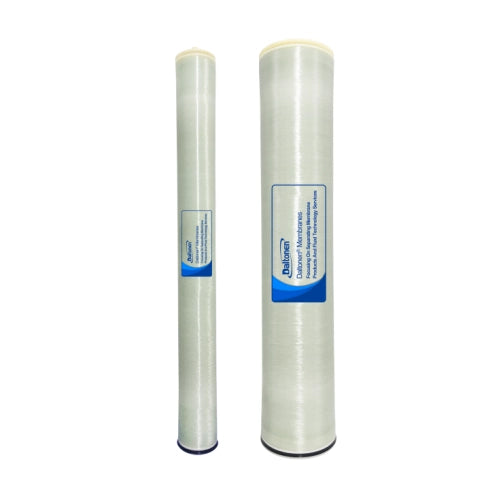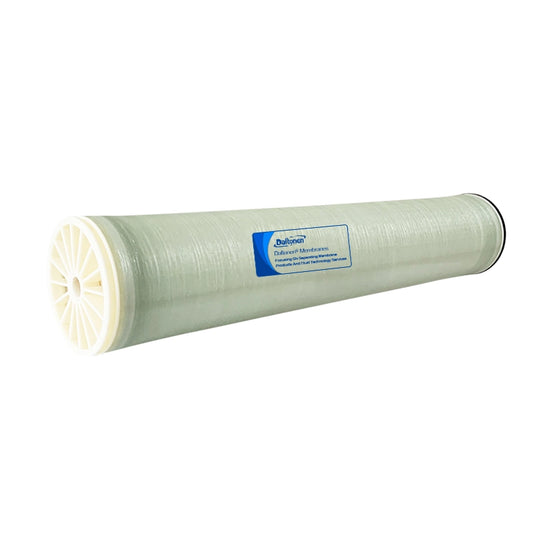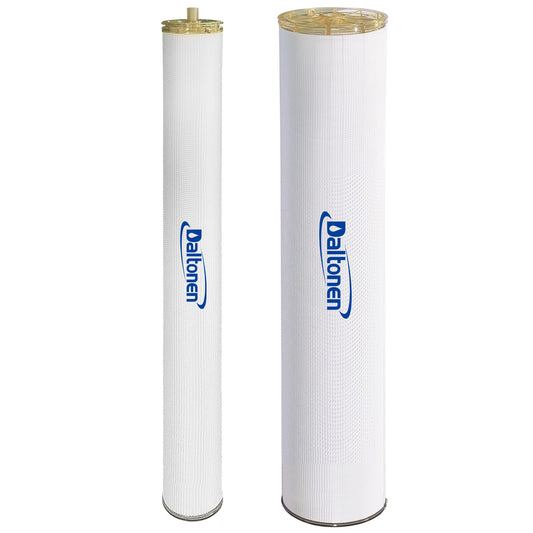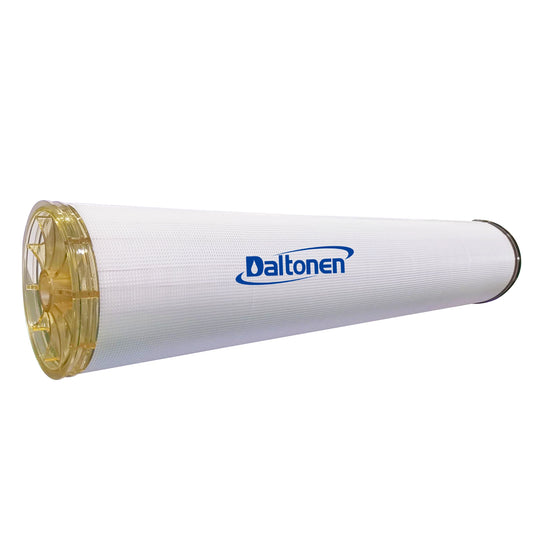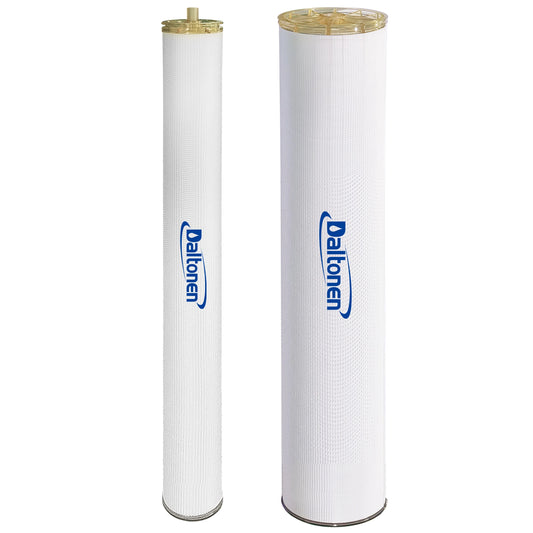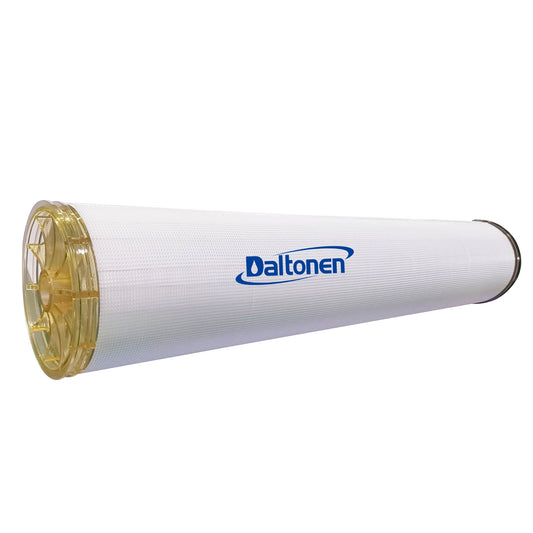Tons per Hour High-Pressure Boiler Feedwater Treatment - DA Process Design - Dual-Stage RO + EDI
01 Apr 2025
Tons per Hour High-Pressure Boiler Feedwater Treatment - DA Process Design - Dual-Stage RO + EDI
Content:
Design of a 5 Tons/Hour High-Pressure Boiler Feedwater Treatment Process
Design of a 5 Tons/Hour High-Pressure Boiler Feedwater Treatment Process
Given the existing RO system effluent quality: Turbidity 0.452 FTU, water temperature 24.3°C, hardness 0.00432 mmol/L, pH 8.34, total iron 0.06 mg/L, conductivity 56.8 μs/cm. The treated water must meet the quality standards specified in GB/T 12145-2016 Water and Steam Quality for Thermal Power Units and Steam Power Equipment, specifically the requirements for boiler feedwater in Table 2 for once-through boilers with superheated steam pressure >18.3 MPa (hydrogen conductivity requirement <0.10 μs/cm), for use in a power station boiler with 25 MPa pressure and 400°C temperature.
I. Process Design
-
Overall Process Flow
Raw water → Pretreatment System (Multi-medium Filtration + Activated Carbon Filtration + Security Filtration) → First-Stage RO System (85% recovery rate) → EDI System (90% recovery rate) → Polishing Mixed Bed System → Product Water Tank → Feed Pump → User End -
Water Balance
-
Raw water flow: 6.54 m³/h (Calculation basis: RO feedwater = 5 / 0.9 / 0.85 ≈ 6.54 m³/h)
-
RO product water: 5.56 m³/h (recovery rate 85%)
-
EDI product water: 5 m³/h (recovery rate 90%)
-
Concentrate discharge: RO concentrate 0.98 m³/h, EDI concentrate 0.56 m³/h (partially reusable for RO feedwater)

II. Working Principles and Equipment Selection for Each Process Segment
-
Pretreatment System
-
Function: Remove suspended solids, organic matter, residual chlorine, and hardness to protect RO membranes.
-
Equipment Selection:
-
Multi-medium Filter: Quartz sand + anthracite, flow rate 7 m³/h, tank dimensions Φ800×2000 mm, power 0.5 kW (backwash pump).
-
Activated Carbon Filter: Coconut shell activated carbon, flow rate 7 m³/h, tank dimensions Φ800×2000 mm, power 0.5 kW (backwash pump).
-
Security Filter: 5 μm filter cartridge, flow rate 7 m³/h, housing dimensions Φ300×1000 mm.
-
-
First-Stage RO System
-
Function: Remove more than 97% of salts and colloids.
-
Equipment Selection:
-
High-Pressure Pump: Centrifugal pump, flow rate 6.54 m³/h, head 120 m, power 4 kW.
-
RO Membrane Array: 4040 anti-fouling membranes, single-stage 2 segments, 4:2:2 configuration.
-
Dosing System: Antiscalant (2 L/h, power 0.1 kW).
-
-
EDI System
-
Function: Further desalination to achieve conductivity <0.1 μS/cm.
-
Equipment Selection:
-
EDI Modules: 3 parallel modules (single module capacity 1.85 m³/h), dimensions 400×600×1200 mm, DC power 0.5 kW/module, total power 1.5 kW.
-
Booster Pump: Centrifugal pump, flow rate 5.56 m³/h, head 30 m, power 1.1 kW.
-
-
Polishing Mixed Bed System
-
Function: Further removal of trace ions to ensure hydrogen conductivity <0.10 μS/cm.
-
Equipment Selection:
-
Mixed Bed Vessel: Nuclear-grade ion exchange resin, tank dimensions Φ600×2000 mm, working cycle 30 days, regeneration pump power 0.75 kW.
-
III. Installed Power and Installation Dimensions
| Process Segment | Equipment Name | Installed Power (kW) | Installation Dimensions (L×W×H, mm) |
|---|---|---|---|
| Pretreatment | Multi-medium Filter | 0.5 | 800×800×2500 |
| Activated Carbon Filter | 0.5 | 800×800×2500 | |
| First-Stage RO | High-Pressure Pump | 4.0 | 1200×600×800 |
| RO Membrane Array | - | 2000×800×1800 | |
| EDI System | EDI Modules | 1.5 | 1500×800×1500 |
| Polishing Mixed Bed | Mixed Bed Vessel | 0.75 | 600×600×2000 |
| Total Power | - | 7.45 | - |

IV. Key Design Verification
-
Water Quality Compliance:
-
RO product water conductivity 56.8 μS/cm → EDI reduces to 0.1-0.2 μS/cm → Polishing mixed bed achieves final hydrogen conductivity <0.10 μS/cm.
-
Total iron is reduced to <0.01 mg/L through RO + EDI + polishing resin adsorption.
-
-
Equipment Compatibility:
-
High-pressure pump matches RO membrane array flow (6.54 m³/h), with a head of 120 m to meet RO operation requirements.
-
Parallel EDI module design ensures a product water flow of 5 m³/h, with a booster pump head of 30 m to ensure feedwater pressure.
-
V. Notes
-
Energy Efficiency: EDI concentrate is reused for RO feedwater, achieving an overall system recovery rate >85%.
-
Automation: PLC controls backwashing, regeneration, and dosing processes to minimize manual intervention.
-
Safety Redundancy: Backup high-pressure pumps and EDI modules ensure continuous water supply.
This design meets the requirements for 25 MPa/400°C power station boiler feedwater, complies with GB/T 12145-2016 standards, and features reasonable equipment selection and power configuration.
Tags:


